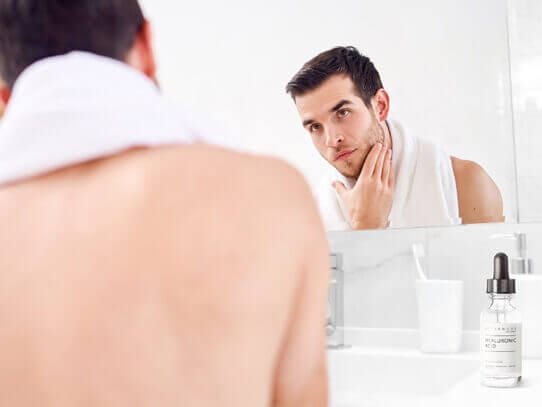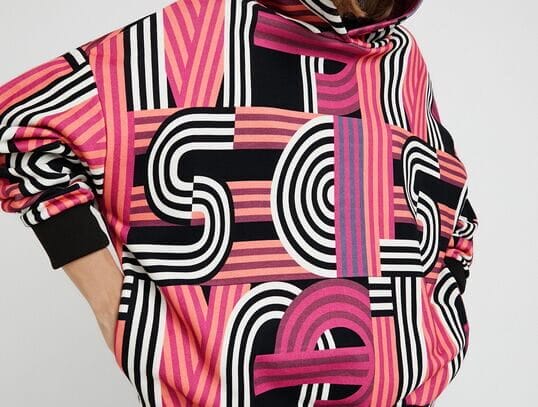As time goes by, it’s becoming more evident than ever before, that any brand not leveraging technology will be left behind. In a word, the aesthetic universal codes in business strategy have drastically transformed. For instance, in 2020, with the onset of COVID-19; the need for businesses to reach consumers from home- without an in-person experience, is a testament to the luxury fashion (metamorphosis) period the industry is experiencing first hand.
This year, the first ever remote fashion week, was not only relevant but rather a strong indicator of how the consumer has now been elevated to an editor-by filtering their own taste and curiosity— by streaming fashion shows. This innovation proves one thing: If you can’t leverage technology, your business may not last the test of time. More to the point, technology is a constant reassessment of how the fashion business has operated over the last few decades.
In a word, consumers have witnessed first hand that technology can simplify the shopping experience. Therefore, if you’re taking significant measures for your customers, you may wish to wander into new territory. This new territory in technology can play a large role in marketing, customer service/satisfaction, and product delivery. The luxury space thrives because advertisers have been able to reach costumes on an emotional level. Buyers of luxurious products believe that these luxury products give them a particular image, and to maintain that image, they have to stay up to date.
Nevertheless, in 2020, the luxury industry had to deal with the COVID-19 pandemic —with the closure of brick and mortar stores. In addition, day-to-day activities for the general public came to a halt; globally. Ironically, the demand for luxury products surged at this time. Consumers who still patronized luxury brands took to online shopping, which will soon be the norm in a post-COVID world. In an article by Bain & Company, it stated: “Approximately half of all luxury purchases will be digitally enabled thanks to new technologies along the value chain, and online interactions will influence nearly all luxury purchases.”
Now more than ever, consumers are demanding an offline experience in addition to the comfort from buying online. Morphing the two together can only be obtained through Artificial Intelligence. And this is where high-end luxury fashion brands are aiming for in the modern age of fashion apparel and accessories.

Throughout my career, my research has always focused on men’s and women’s luxury fashion. To my point, fashion is not conventional. Today, artificial intelligence brings that needed personalization and customers back to the brand. Luxury brands such as Dior, Louis Vuitton, Burberry, Estée Lauder, Tommy Hilfiger and even Levis have leveraged chatbots to add that human touch, needed for today’s customers. From the exclusive access, previews, and style tips, it is a strategy that heightens the customer experience by allowing consumers to feel like a VIP.
For example, Burberry understands that by using chatbots to send push notifications to each consumers who had previously interacted with the technology. According to Luxury society, as of November 2016, they allowed their users to preview the Burberry movie. The following year, they invited their customers through the chatbot to view their runway show live on Facebook while shopping the newly featured collection.
Going further, brands leverage AI to monitor their browsing history to provide better-targeted emails that show users’ content based on their choices. This trend moves far beyond the fashion and luxury e-commerce platform and segues into the entertainment space with rapid flow. Although music streaming companies already use AI for music recommendations, there are possibilities that AI will be used to do more than recommend music to you. Imagine reading your body vitals like heart rate, stress levels, breathing rate, and possibly even neurological signals through wearable technology and recommending music to you by understanding the mood that you are in? Well, the same can be said for fashion and beauty.
“Today’s consumers want ease and an exceptional buying experience. Brands that offer the least stress around their product/service delivery own the future,” saysBusiness Development expert Paul Iwenofu.

Although I do not report on this topic, the rise of wearable technology is segueing into mass-marketed fashion brands that most of the consumer population wears. The fashion industry has embraced wearable technology on two points. These points go beyond smartwatches. Today, shirts, blouses, jackets, and pants can respond to the mood and the environment. Since over a decade, there has been technology that keeps the body temperature balanced used by brands such as Under Armour. And this is just the beginning.

Recently, Ralph Lauren introduced a PoloTech T-shirt with sensors that track live metrics like breathing, heart rates, and steps straight to your Apple Watch or iPhone.
My dear friend and fellow colleague Salvatore Giardina, an adjunct professor at the Fashion Institute of Technology, commented on the PoloTech and said, “People are just information addicts today. My gut feeling is it will do well because it’s not just something that looks nice; it gives you information.”
“What seems science fiction now may be the norm in 10 years,” Giardina points out.

Another area where lifestyle brands are heading to is Augmented Reality (AR). Gucci is doing impressive work in this area with their virtual try-on feature. They added an AR feature on the IOS app that allows shoppers to try on their sneakers. All you need to do is point your phone on your feet, and shoppers can see a digital image of the sneakers from different angles. This helps shoppers make an informed decision when trying to make purchases. And other luxury fashion brands have followed suit as well. Nike lets its customers scan their feet with a smartphone camera to get customized recommendations on their correct shoe size.
Even the luxury automotive industry has been co-branding with luxury fashion brands. When it comes to co-branding and modified technology, luxury automotive brands are not taking the backseat (pun-intended). For instance, BMW has also brought AR into their services. Their AR tech allows users to operate real-life virtual care with their phone’s camera and sensor. It feels like a video game because you can change the interiors or lights. Ultimately, it is useful for helping customers make their purchases.
Finally, the use of influence marketing, especially in the luxury niche, is becoming more and more important as mankind moves into the future. At first, luxury brands didn’t believe in social media —for fear that it would have made their products appear less luxurious. Nowadays, new luxury fashion influencers are popping-up every day due to the demand in the marketplace.
Studies present that 66%+ of luxury brands are actively using influencer marketing to promote their brand. The benefits of influencer marketing are grand in scope. Most of all, the ROI studies show that businesses earn $6.50 for each dollar spent on influencers, with the top 13% making $20 or even more.
It seems to me that the never-ending search for change is racing to keep up with consumer buying habits and overall lifestyle. The world is changing, and so is the market. Today’s customers demand more. They want personalization, ease of service, and a great buying experience. Although fashion retail has evolved, forthright fashion and beauty brands are well aware of the importance of a retail physical locations for various reasons in today’s consumer marketplace.
Follow me on Twitter or LinkedIn. Check out my website or some of my other work here.
Save Article










